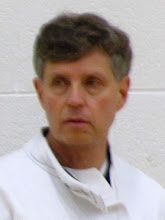As I’ve
alluded earlier I’m working on a large project which involves, in part, the
ancient south western US. As part of
that endeavor I’ve just read a new paper by the noted southwestern archaeologist,
Stephen Lekson. The paper’s perspective
is large and archaeological but implicitly poses several questions which are
pertinent to this week’s tragic events in Paris.
The
archaeological record tells us that humans have been around in their current
form for 200,000 years. During almost
all of that time we were hunter-gathers; the agricultural revolution is
extremely recent. It began 10,000 years
ago but has only been in consistent, wide practice for 3-5 thousand years. Yet we know that with rare exceptions, our physiology, including our brains, evolve
very slowly. Hence, we have the same
brains as our hunter-gatherer ancestors, and because of the vast amount of time
we pursued that way of life it’s probable that our brains are optimized for it.
For the most
part, hunter-gatherers appear to live and work in 2 social structures
concurrently, “bands” of around 25 and
“tribes” of 500-1,000. With the
agricultural revolution came cities, technology and now the high population
densities and rapid change that characterizes contemporary life. What’s a poor guy with a brain equipped to
deal with a band of 25 and a tribe of 1,000 to do?
Innovate. We’ve applied precedence and hierarchy to
social organization, for example. But
there are many others. Indeed, it’s
interesting to look at everything, from modern political systems, to religious
organizations, to digital technology and ask how they facilitate (and enable)
adaptation to that larger and more complex world.
Consider,
how many “bands” and “tribes” you belong to, how they interact, why you’re a
member of them. Which ones are
successful? Which ones are in
conflict? How do we as individuals
manage them, practically, philosophically, morally? How do they work? Can they work better?
Perhaps our
institutions (there’s a difficult, at least abstract, concept for a
hunter-gatherer brain) could benefit from looking at the problems they face
daily, in that context.
John Gardner,
the novelist who wrote “Grendel,” retells a myth about the God Odin. Odin finds himself exhausted and overwhelmed
by the work of keeping the dragons and giants in check, arbitrating humanity’s
nitty, sometimes tragic problems, in general keeping chaos and entropy at bay
and the universe in balance. He visits Loki, the god of fire and other
things, and tell him his problem.
“I know the
answer,” Loki says, tentatively.
“What is
it?”
“The answer
is of such great value, is so important and so difficult it merits a great
price.”
“What is
it?”
“I will give
you the answer in exchange for one of your eyes.”
It is a
terrible price but Odin so loves creation, that he suffers the terrible pain
and partial loss of vision. He removes
one of his own eyes and gives it to the trickster god. “Now, tell me, what is the answer,” he
demands.
“Keep both
eyes open.”
Steven
Lekson’s paper is entitled “Cross Cultural Perspectives on the Community” and
is published and available on academia.edu.




No comments:
Post a Comment